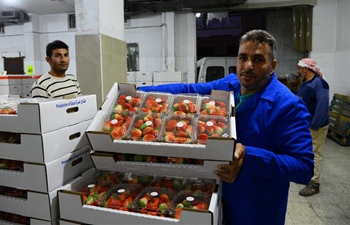CHICAGO, Dec. 18 (Xinhua) -- Researchers at Washington University School of Medicine in St. Louis have discovered a way to supercharge protein production up to a thousandfold.
Proteins are built from chains of amino acids hundreds of links long. The researchers stumbled on the importance of the first few amino acids when an experiment for a different study failed to work as expected.
"We changed the sequence of the first few amino acids, and we thought it would have no effect on protein expression, but instead, it increased protein expression by 300 percent," said Sergej Djuranovic, an associate professor of cell biology and physiology and the study's senior author. "So then we started digging in to why that happened."
The researchers turned to green fluorescent protein, a tool used in biomedical research to estimate the amount of protein in a sample by measuring the amount of fluorescent light produced. They randomly changed the sequence of the first few amino acids in green fluorescent protein, generating 9,261 distinct versions, identical except for the very beginning.
The brilliance of the different versions of green fluorescent protein varied a thousandfold from the dimmest to the brightest, indicating a thousandfold difference in the amount of protein produced. With careful analysis and further experiments, researchers from Washington University and Stanford University identified certain combinations of amino acids at the third, fourth and fifth positions in the protein chain that gave rise to sky-high amounts of protein.
Moreover, the same amino-acid triplets not only ramped up production of green fluorescent protein, which originally comes from jellyfish, but also production of proteins from distantly related species like coral and humans.
The findings could help increase production of proteins not only for medical applications, but in food, agriculture, chemical and other industries.
The findings were published on Wednesday in Nature Communications.













